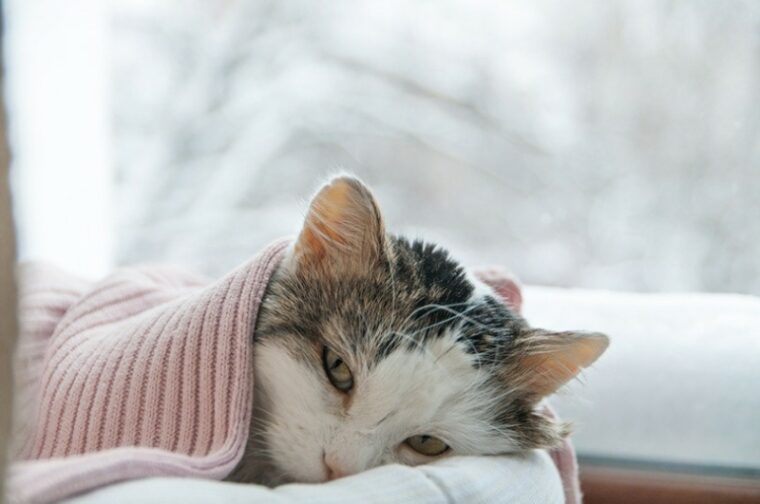
Living with cats requires making some adjustments, and one factor that’s often forgotten by cat owners is room temperature. While cats can survive in temperatures between 50°F–60°F, temperatures this low can feel uncomfortable. They usually prefer temperatures set above 70°F 1.
Your cat won’t be able to verbally tell you to adjust the thermostat if they’re feeling cold, but they’ll certainly show some signs of discomfort caused by the temperature in the room. Here are some signs that cats typically show when they’re feeling too cold.
How To Know If a Cat Is Cold
1. Hunched Position
Cats that feel comfortable and relaxed often lie down on their side with their limbs sprawled out. Cat loafing is also a sign of being relaxed, but some cats may tuck their limbs close to their bodies as a means of conserving energy. If you notice that your cat is hunched with their limbs and tail tucked in, it’s very possible that they’re feeling cold or uncomfortable. Touching your cat and checking to see if they’re shivering or trembling while they’re lying in this position will also confirm that they’re feeling cold.
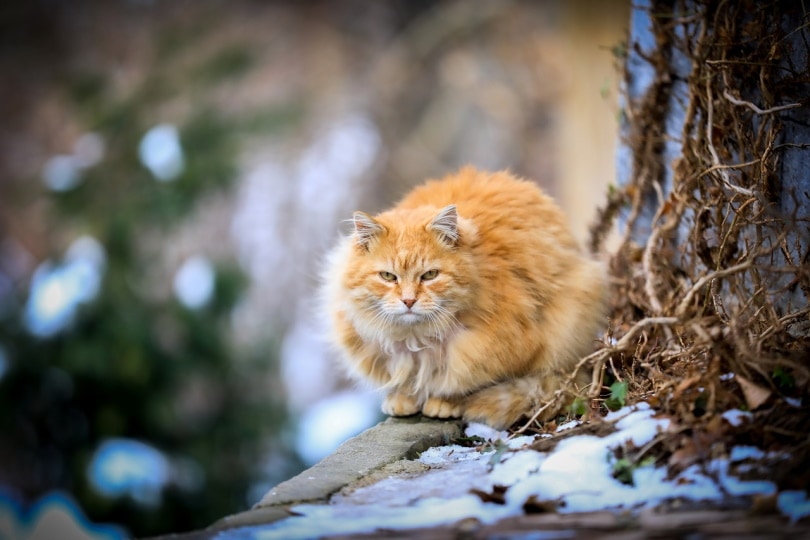
2.Lying Near You
Your cat may also view you as a heat source and try to lay next to you or on top of you. So, if your cat isn’t usually a lap cat and is suddenly seeking more physical contact, it can indicate that something is off. They may be simply wanting warmth from your body heat, but neediness or sudden changes in behaviors can also be signs of other kinds of discomfort, like stress or illness.
3. Seeking Warmer Locations
Your cat may try to seek warmth on their own by searching for warm spots in the home. You may find them burrowing under blankets, inside a laundry basket full of clothes, or following sunlight around the house.
If you have a radiator in your home, your cat may try to lay near it. This can be dangerous as radiators can cause heat burns, so it’s important to redirect your cat to another heat source to prevent any injuries.
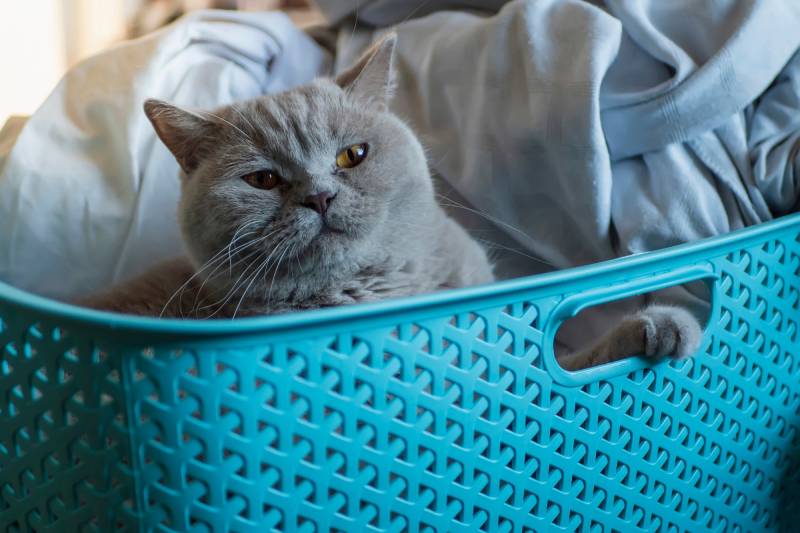
4. Cold to the Touch
Cold cats will also be cold to the touch, particularly at their ears and paws. Of course, if your cat is stepping indoors after spending time outside on a cold day, their fur and skin will initially be cold. However, they should feel warmer after a few minutes.
If your cat is cold to the touch, you need to help them warm up. A blanket, physical contact, and a pet-safe heating pad can help them recover and maintain their normal body temperature.
5. Shivering
Like people, cats will start to shiver when they’re cold and when their body temperature starts to drop 2. Shivering can be a warning sign of hypothermia, so it should be addressed quickly. You can help your cat by wrapping them in a warm blanket or plugging in a pet-safe heating pad for them to lie on. If you use a heating pad, make sure it is fully covered by a towel or blanket so there is no direct contact between the pad and your cat’s body.
Shivering can also be a sign of other health concerns, like hypoglycemia, shock, or kidney disease. So, it’s best to consult your veterinarian for a proper diagnosis of your cat’s condition.
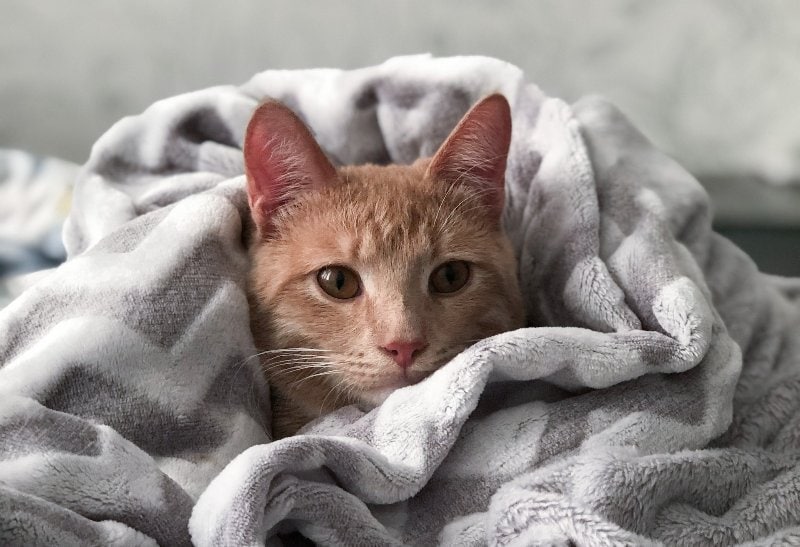
6. Lethargy
Sluggishness can be a warning sign of hypothermia. As a cat’s body temperature drops, they’ll start to become more lethargic. So, if you notice that your cat’s not staying focused and their movements and activity have slowed down, it could be a sign of hypothermia. Since hypothermia can quickly escalate your cat to critical condition, make sure to contact your veterinarian right away to provide immediate care for your cat.
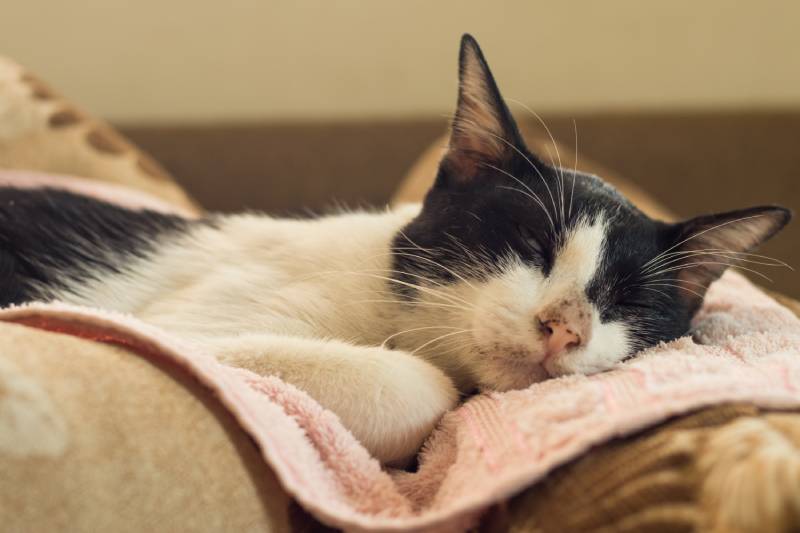
Frequent Asked Questions
How Can I Help My Cat Stay Warm?
Different cats will have different temperature preferences. Typically, kittens and senior cats face more challenges with regulating their body temperatures, so they’re often more prone to getting cold. Cat breeds with thinner coats, like Bambinos and Sphynxes, are also more likely to get cold faster than other cat breeds.
One of the best ways to ensure your cat stays warm is to adjust the room temperature. It’s especially important to be mindful of room temperature during colder winter months. Your cat will also appreciate having various sources of warmth. Adding a blanket or pillow to your cat’s bed will help them retain body heat and give them the option of burrowing underneath them. Some cats will appreciate a heating pad or a well-insulated hot water bottle. Placing beds or mats by windows that get a lot of sunlight can also provide a warm resting place for your cat.
Some hairless cats may appreciate wearing a sweater. Keep in mind that these cats have sensitive skin, and itchy fabrics can cause chafing and skin irritation. So, when it comes to shopping for a sweater, make sure to choose one made with high-quality fabric that’s both breathable and soft.
If you have an outdoor cat, make sure to give them opportunities to dry off if they’ve been out on a rainy or snowy day. Wrap them in a towel to absorb moisture, and if your cat’s resistant to being wrapped, lay out towels and other moisture-absorbent fabric for your cat to lay and roll around in.
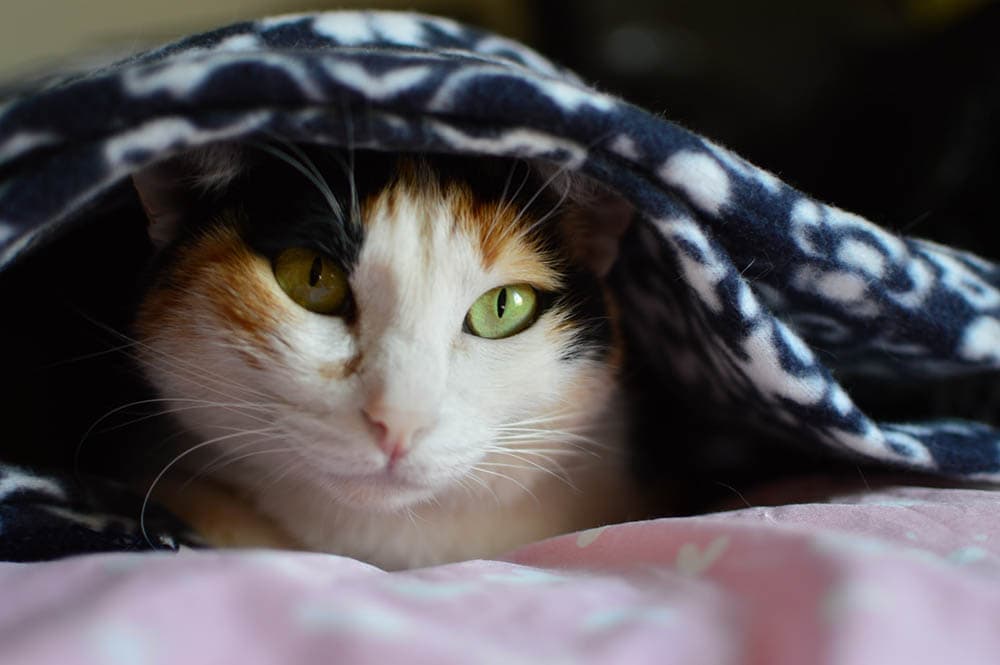
What Are Signs of Hypothermia in Cats?
In some cases, cats that have been in the cold for too long can develop hypothermia. Hypothermia occurs when a cat’s body temperature drops and starts to affect normal bodily functioning negatively. Cats have an average internal temperature of 101°F–102.5°F, and their health is at risk if their temperature drops below 99°F. With that being said, checking your cat’s internal temperature is one of the best ways to prevent hypothermia or get your cat help more quickly.
Shivering, lethargy, and low body temperature are all possible signs of hypothermia. Cats with hypothermia can also have dilated pupils, muscle stiffness, and a decreased heart rate. They can also be less responsive and have shallow breathing or difficulty breathing.
What Should I Do If My Cat Has Hypothermia?
It’s better to be safe than sorry, so contact your veterinarian right away if you suspect your cat has hypothermia. Your veterinarian can conduct a physical exam and do additional testing to diagnose hypothermia. Your cat can also be checked for potential frostbite and receive treatment, if applicable.
Treatment for hypothermia will vary depending on the severity. Mild cases can often be resolved by warming up your cat by wrapping them in a blanket. More severe cases of hypothermia often require using active warming devices and warm IV fluids to stabilize your cat’s vitals.
Conclusion
Cats will display several different signs when they’re feeling cold, and you’ll notice these subtle signs and changes more quickly as you get to know your cat. Fortunately, feeling cold or developing hypothermia is preventable. Having different warm spots in the home and laying out more blankets can help your cat find alleviation from feeling cold. If you do suspect a case of hypothermia, make sure to get your cat to a veterinarian right away for accurate and appropriate diagnosis and treatment.
Featured Image Credit: Germanova Antonina, Shutterstock







